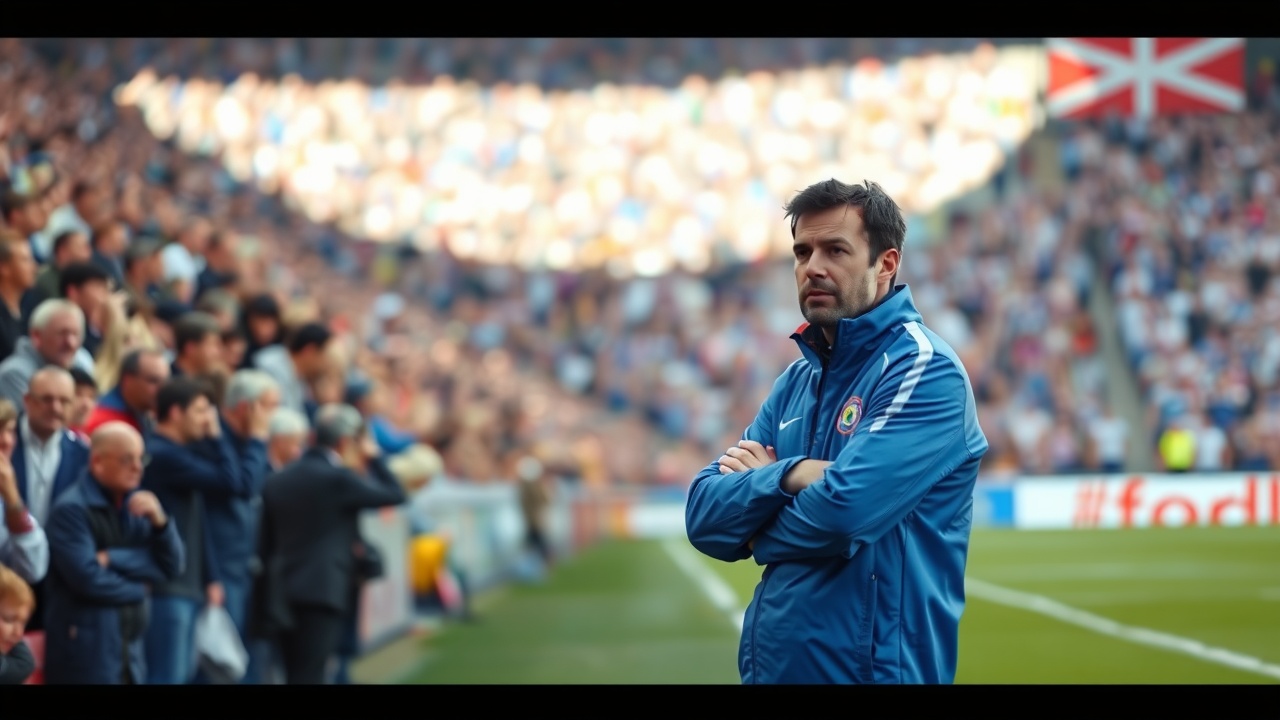Leicester City’s Struggles Under Van Nistelrooy
Following a dismal performance against Newcastle United—where Leicester City’s defensive frailties allowed an early goal just minutes into the match—manager Ruud van Nistelrooy was visibly distraught on the sidelines. His frustration was clear, leading to an outburst that echoed the sentiments of many Leicester supporters as their team edged closer to a potential relegation for the second time in three years.
Management Changes and Initial Hopes
Van Nistelrooy, once a celebrated striker in the Premier League, took over Leicester City in November with high hopes, succeeding Steve Cooper after only 12 games. Cooper’s dismissal had already raised eyebrows, and the disastrous results under Van Nistelrooy have only intensified scrutiny of the club’s management choices.
With an ambition to reverse the club’s downward trend, Van Nistelrooy believed his substantial experience and coaching evolution at PSV Eindhoven and Manchester United equipped him to steer Leicester back on course. However, his stint became characterized by poor performances and lackluster results that set unwanted historical precedents for the club.
Challenges and Team Dynamics
When appointed, Van Nistelrooy inherited a struggling team that was precariously two points above the relegation zone. Leicester’s board aimed for a change in command, hoping he could galvanize the squad and build a winning mentality. Initially, players were encouraged by the arrival of such an iconic figure; they hoped his winning pedigree would inspire a turnaround.
Despite his previous success at PSV and a brief period as United’s interim manager, Van Nistelrooy’s time at Leicester was marred by extensive losses and growing disharmony within the squad. Key players, like Jamie Vardy, did maintain respect for him, remembering their shared success in the league, yet the faith in the new managerial approach began to wane.
Tactical Struggles and Declining Morale
Van Nistelrooy quickly discovered that while his theoretical strategies made sense during practice, they failed to translate in high-pressure match conditions. After a promising start that saw Leicester claim four points in the first two games under his guidance, the team’s results took a sharp downturn. The players struggled to implement his pressing tactics, and morale plummeted.
Throughout the season, Van Nistelrooy grappled with various challenges: he lacked sufficient support staff, inherited a disjointed team, and managed an incident involving a player bringing a pet to training. Over time, it became clear that the squad’s capacity to adapt to an intense, pressing game was severely lacking.
As losses accumulated, Van Nistelrooy reverted to a conservative starting lineup and stuck with the same tactics, finding it increasingly difficult to motivate players who were visibly becoming disheartened by the mounting defeats. His tactics, while refined, failed to invoke the necessary reactions and their performances became marred by individual errors and dwindling confidence.
Conclusion: A New Chapter for Leicester City
Ultimately, the once-promising coaching career of Van Nistelrooy has suffered significant blows, with Leicester’s decision to part ways with him following relegation marking a low point in his professional life. The club now faces the daunting task of rebuilding under a new manager, one who must establish a fresh connection with a disillusioned fanbase while addressing the financial constraints that accompany relegation.
The implications of this coaching change and the rough season will resonate for quite some time within the club, indicating that restoring Leicester’s stature in football will require a Herculean effort.




